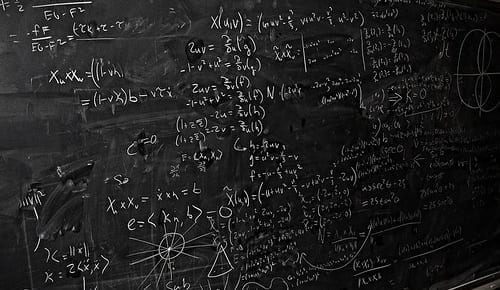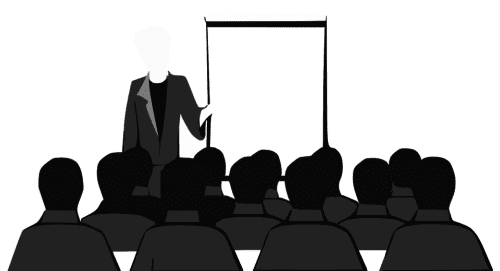Table of Contents
Combining pedagogical elements, content, and interpersonal knowledge
by Amanda Shuford Mayeaux, Ed.D.
 Early in my career, I taught sixth through eighth grade mathematics in a rural school deep in the swamps of Louisiana. I had convinced the principal I knew how to teach middle school mathematics, which was a long way from the truth. One October day we tackled the objective of solving percent of discount problems.
Early in my career, I taught sixth through eighth grade mathematics in a rural school deep in the swamps of Louisiana. I had convinced the principal I knew how to teach middle school mathematics, which was a long way from the truth. One October day we tackled the objective of solving percent of discount problems.
Mike, who was incorrectly placed in the “low” class, was often agitated and disengaged. He was in the back of the room rolling his eyes while I tried my best to ignore him. When he raised his hand and started waving at me, I finally responded. He said, “You know this is just like what you taught us in chapter 3, except we are finding a different piece of the equation. I am not sure why you did not teach it all together. That would make way more sense!”
He looked at me with his signature smirk and waited. I took a breath and looked back at chapter 3 and replied, “You know, you are right. Put up your books. Let’s try this another way.” We began a three day quest to understand the overall concepts, make connections, and work together. We built a strong culture in our classroom where questions and challenges were welcome. The students mastered the material and I glimpsed through the Expert Lens for the first time in my career.
The Expert Lens
Through my research of expert teachers, I have discovered one of the standout elements of expert teachers is their ability to make powerful choices through their simultaneously strong pedagogical, content, and interpersonal knowledge. The three elements merge together to create a single expert lens through which the expert teacher views all interactions and activities to positively impact student achievement. The three types of knowledge are fluid and interdependent. When questioned during interviews, the teachers could not separate decisions into pedagogy, content, or interpersonal knowledge, but rather used all three intertwined to make best choices for students.
Interpersonal Knowledge
 The first element of the Expert Lens is the Interpersonal Knowledge of the expert teacher. This lens is the optics through which teachers view students’ social and emotional needs. Expert teachers are able to pick up subtle clues from facial expressions, body language, tone of voice, and other interactions to understand the needs each student in the classroom. This lens is also the foundation of the classroom culture the teacher and students create.
The first element of the Expert Lens is the Interpersonal Knowledge of the expert teacher. This lens is the optics through which teachers view students’ social and emotional needs. Expert teachers are able to pick up subtle clues from facial expressions, body language, tone of voice, and other interactions to understand the needs each student in the classroom. This lens is also the foundation of the classroom culture the teacher and students create.
In each class I visited, the culture was encouraging, open to questions, welcoming of mistakes, and all students felt wanted and appreciated. Humor was often also in play, but respectful and kind. When I asked teachers about their students in the classes I observed, each shared very specific things they noticed and how these elements helped them understand how each student was feeling about the lesson. For example, Suzy shared, “And so there’s Janine, who has come to a conclusion based on evidence from the text that she thinks contradicts Quincy’s idea about the theme. I saw her eyebrows arch up and her face! Joe’s face was red and he was like, ‘I don’t agree!’ And everybody else was like this and there’s Janine….and she wasn’t just like going along with the crowd. Did you see her face and how she crossed her arms! I was on the edge of my seat waiting for that debate!”
The Pedagogical Element
 The pedagogical element of the Expert Lens is the choices the teachers makes in choosing the strategies or teaching methods to use to teach the content and build culture. These methods build upon the interpersonal knowledge as the teacher chooses strategies to help student master content, but also impact culture. For example, in Suzy’s first hour class, the students worked through a poetry analysis activity using a Think Write Round Robin structure to practice the SIFT method for analyzing poetry. During Suzy’s second hour class, the students used the same SIFT method, but the class used a jigsaw discussion structure instead of a Think Write Round Robin.
The pedagogical element of the Expert Lens is the choices the teachers makes in choosing the strategies or teaching methods to use to teach the content and build culture. These methods build upon the interpersonal knowledge as the teacher chooses strategies to help student master content, but also impact culture. For example, in Suzy’s first hour class, the students worked through a poetry analysis activity using a Think Write Round Robin structure to practice the SIFT method for analyzing poetry. During Suzy’s second hour class, the students used the same SIFT method, but the class used a jigsaw discussion structure instead of a Think Write Round Robin.
In our debrief at the end of the day, I asked Suzy to discuss why she used two different grouping methods for the same analysis strategy. She replied, “My first hour is made up of predominately introverts, who do not like to move around too much. Conversely, the students in second block are predominantly extroverts and very active. I chose the SIFT method because it works so well for analyzing any type of poetry. I chose the grouping structures to meet the different social/emotional needs of the two classes. Both classes ended up with the same product and were equally successful, I just had to design the class to meet their discussion needs.”
Content Knowledge
 The final element of the Expert Lens is content knowledge. Expert teachers have a highly developed, conceptual knowledge of their content. This understanding allows them to see the content as a whole and understand the big picture connections running across their year. These teachers are able to understand how each moment in each lesson fits into the overall mastery of the content.
The final element of the Expert Lens is content knowledge. Expert teachers have a highly developed, conceptual knowledge of their content. This understanding allows them to see the content as a whole and understand the big picture connections running across their year. These teachers are able to understand how each moment in each lesson fits into the overall mastery of the content.
Suzy, for example, understood students needed a strategy to analyze poetry, so she chose SIFT. She also understood SIFT would work for any poem despite the complexity. When I questioned her further, she told me, “We work really hard to understand theme and make connections across all types of text throughout the year. SIFT gives students a visual to begin to conceptualize how themes emerge in poetry. We will use similar structures when we began deconstructing literature and nonfiction. I do not want them to just see poetry or short stories, but to see the human experience through text. The big idea is the small pieces of language weave together to create common themes. SIFT does this for poetry and I can build upon the analysis skills for future pieces.”
All Together Now!
For Suzy, these three layers melted into one lens. Suzy’s deep understanding of her content informed her choices about how to apply her pedagogical knowledge in choosing SIFT as an analysis strategy. Her understanding of the social/emotional needs played into how she constructed the group interactions when they applied SIFT. The classes all had the same learning target, but different pedagogical choices were used based on her strong interpersonal understandings of the two classes.
During the lessons, Suzy did not just listen to what students said, but observed everything about every student to understand all the complexities occurring during the lesson. Her questioning and feedback to the groups reflected her observations. I asked her why she called on Ava during the class wrap-up. She replied, “Well, I know Ava struggles with analysis. I don’t know if you saw how I gave her that SIFT organizer with some extra thinking prompts on it? During the lesson, I paid close attention to her and her interactions with her partner. At the end, when she moved the hair out of her face and sat up straight, I saw confidence and realized she had made a connection and would share it with success. I knew her answer and reasoning was sound, but most of all, I wanted her to have the social win of being the one to wrap it all together. She has never done that in class. Did you see how she smiled and told me good-bye? Powerful day for Ava!”
 In education, we are always seeking the one thing to make every child successful. From the perfect curriculum to that one canned program to the earth-shifting strategy, we keep seeking. All of these are fruitless pursuits. The one thing is a powerful teacher who possesses highly developed interpersonal, pedagogical, and content understanding and applies these through the Expert Lens.
In education, we are always seeking the one thing to make every child successful. From the perfect curriculum to that one canned program to the earth-shifting strategy, we keep seeking. All of these are fruitless pursuits. The one thing is a powerful teacher who possesses highly developed interpersonal, pedagogical, and content understanding and applies these through the Expert Lens.
As for me, my first glimpse through the Expert Lens pushed me to spend the next twenty-five years trying to understand expert teachers. Mike and I had coffee last year after 23 years since I last saw him at eighth grade graduation. I shared how he taught me more about teaching in a single question than I had learned in four years of college. After that fateful October day, I seldom took out a textbook for more than a reference. I taught math for the connections we made across both content and with each other. I focused on building strong relationships with and between my students, helping students piece together the content to see the big picture ideas, and worked hard to deepen my own understanding of the content. Mike is the first person in his family to graduate from college and he told me he kept a few note cards on the wall of his office to remind him of things I had told him. None of these sayings were about mathematics.
Author
She has been honored with several national teaching awards, including the Milken Educator Award in 2003 and Disney’s Outstanding Teacher of the Year in 2006, along with her teaching partners, Monique Wild and Kathryn Edmonds. Her research interests include expert teachers, rural education, school culture, and effective leadership.
Further Reading
- Digital Learning – Making Learning a Matter of Sheer Joy
- TES – The ten key attributes of an outstanding MFL teacher
- Harvard Magazine – Rethinking what liberal-arts undergraduates ought to learn, and how


